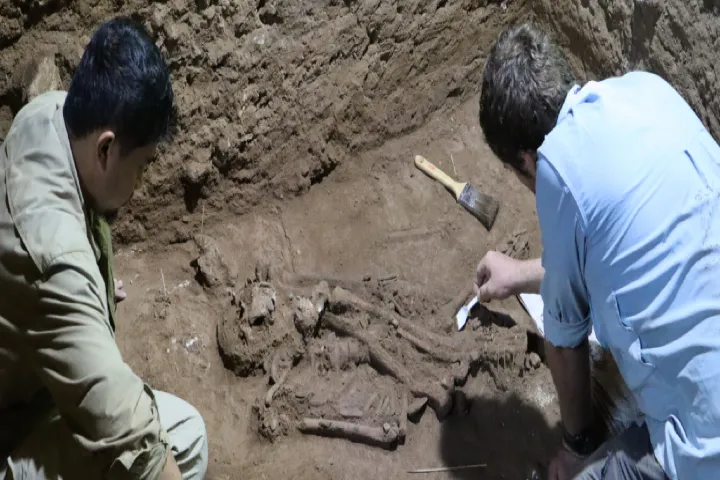Archaeologists and scientists were thrilled to find a human skeleton with a missing left leg as it provided them with the proof of a surgical amputation which was the oldest so far.
It was dug out in 2020 by a team of Indonesian and Australian researchers co-led by Tim Maloney, Griffith University’s archaeologist from a limestone cave located in East Kalimantan in Indonesian Borneo.
The young individual’s left foot had been competently removed when the person was a child and that too at least 31,000 years ago! Following the healing, the individual lived for probably six to nine years and was buried with the removed leg in a grave.
According to University of Sydney’s bioarchaeologist Melandri Vlok: “It was a huge surprise that this ancient forager survived a very serious and life-threatening childhood operation, that the wound healed to form a stump, and that they then lived for years in mountainous terrain with altered mobility – suggesting a high degree of community care.”
Before this, the earliest proof of amputation during the Stone Age was provided by a 7,000-year-old elderly male skeleton found in France whose left forearm had been removed above the elbow.
Even today with medical advancement, amputation operations like this require a high degree of skill and thorough knowledge of human anatomy, hygiene and circulatory systems of the body. The Borneo skeleton had the researchers marvel at the people who performed the surgery thousands of years ago by adroitly managing the blood vessels, nerves and veins to amputate the foot while avoiding loss of blood and infection. This level of competency came to Western societies just 100 years back.
It was assumed earlier that amputation skills were developed when agriculture became the mainstay of humans. As per Griffith University’s archaeologist Maxime Aubert: “What the new finding in Borneo demonstrates is that humans already had the ability to successfully amputate diseased or damaged limbs long before we began farming and living in permanent settlements.”
Scientists dated the skeleton by computing the radiation levels in the tooth enamel and compared the age estimate with the radiocarbon dating of the deposits where the remains were found.
Healing of the bone indicated that the surgery was done when the person was a child and there were no signs of infections at the spot where the leg bone had been sliced.
With the discovery of more fossils only can scientists confirm that the foraging people of the region had medical competency. The Borneo case could be a one-off event but the vast repository of knowledge about plant-based cure that the indigenous community in this region have, points that ancient people dwelling in the rainforest had the wherewithal to tackle infections.
Highlighting this, India Ella Dilkes-Hall, an archaeobotanist at the University of Western Australia observed: “One possibility is that rapid rates of infection in the hot and humid tropics prompted early foragers in this region to tap into the rainforest’s ‘natural pharmacy’ of medicinal plants, leading to an early flourishing in the use of botanical resources for anaesthetics, antiseptics, and other wound-healing treatments.”
Details of the research were published in Nature.














